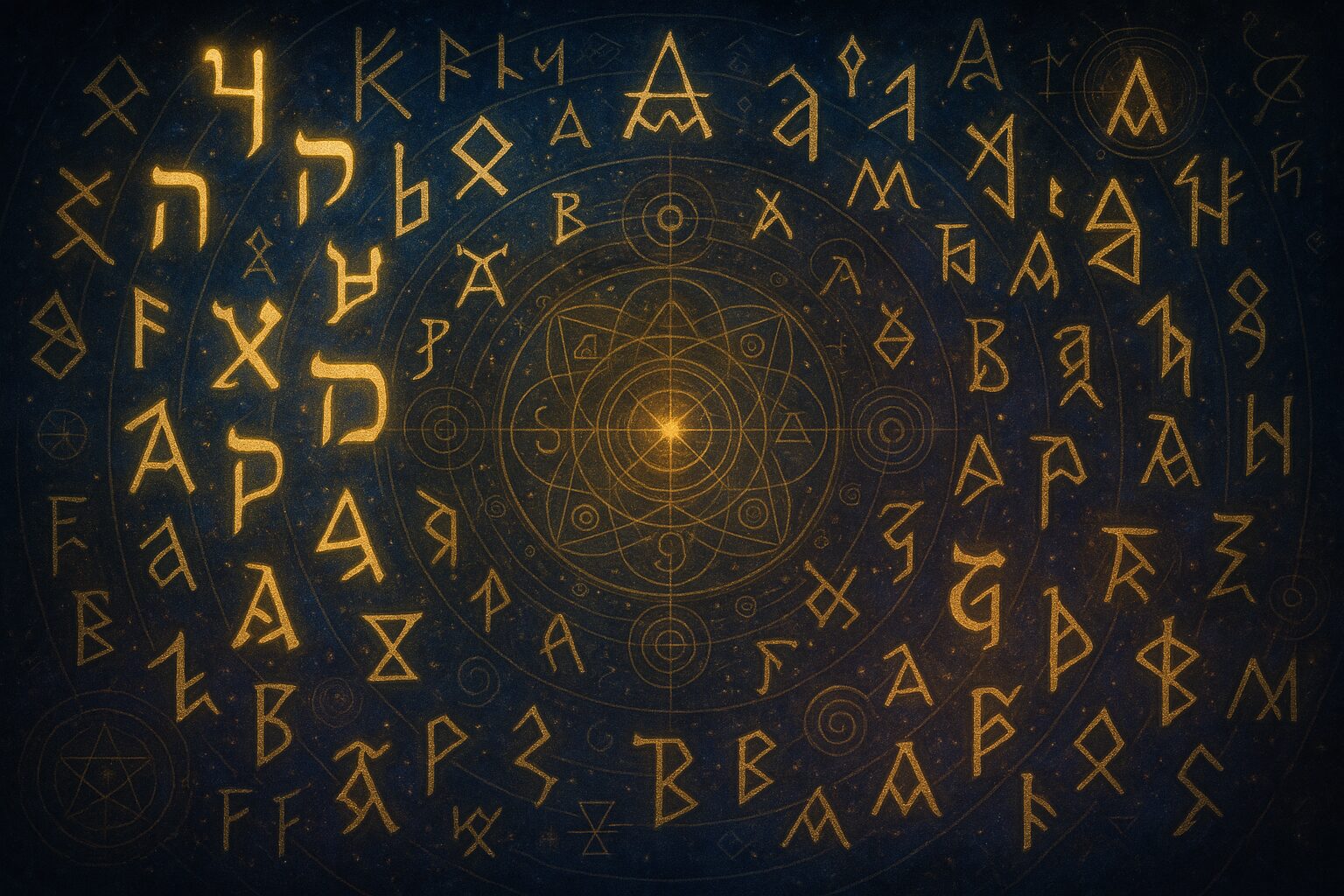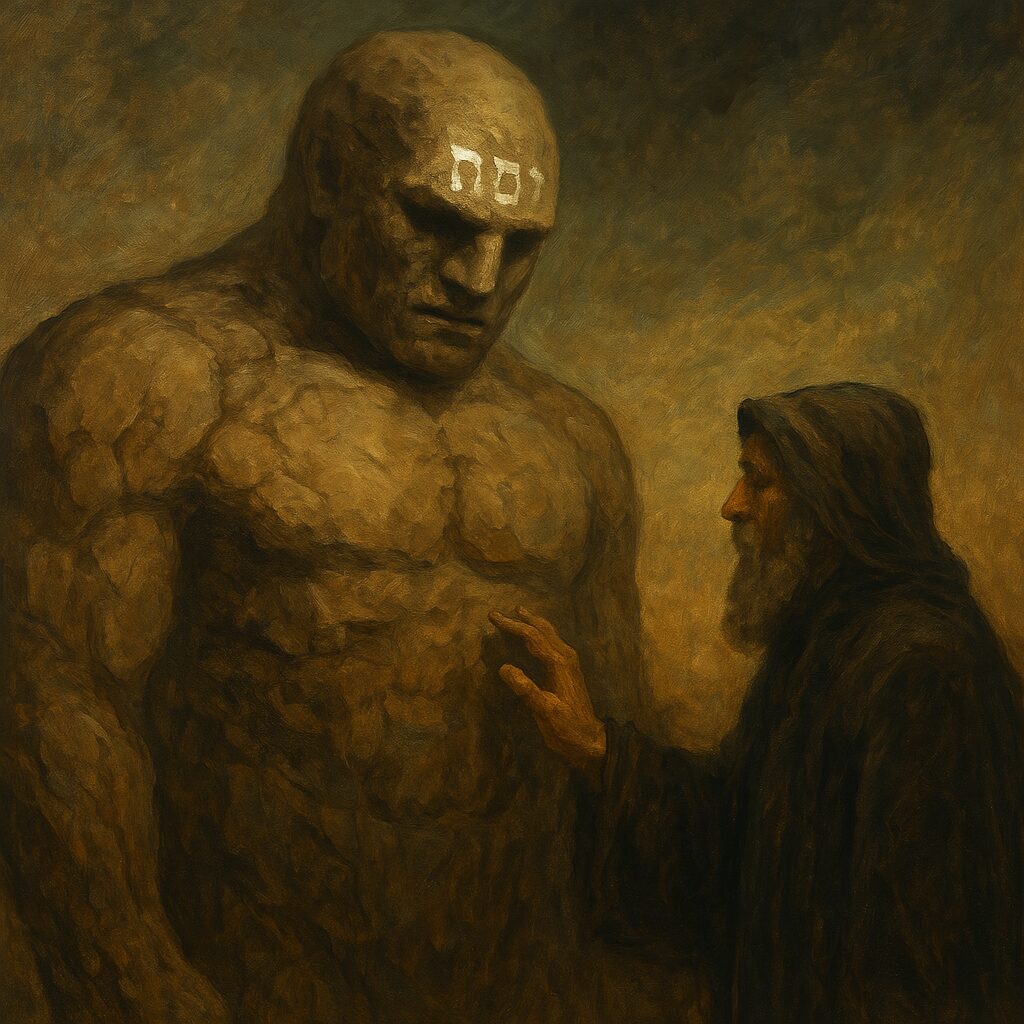Before creation, there was sound. Before sound, there was the Word—the Logos—vibration clothed in symbol. Across mystical traditions, the written letter is more than a unit of language; it is a living force, a vessel of divine energy, a glyph that bridges mind and cosmos.
Occult alphabets—whether Hebrew, Enochian, Theban, or others—have long been used to encode, invoke, and transform. Behind their jagged edges or serpentine curves lies a metaphysical truth: letters are spells, and to write is to cast.
Letters as Spirits
Mystical traditions often regard letters as entities with consciousness. In Hebrew Kabbalah, each letter of the Aleph-Bet is a being, a channel for divine emanation. The first verse of Genesis—Bereshit Bara Elohim—is more than a sentence; it’s a spell made of sacred architecture.
The letter Aleph (א) stands for unity, breath, the unknowable. Shin (ש) represents fire, transformation, divine spark. Every letter has a numerical value (gematria), a sound, a shape, and a soul.
To meditate on a single letter is to open a doorway.
The Secret Alphabets
While Hebrew remains central to Kabbalistic and Christian mystical systems, other occult traditions created their own magical scripts, often to hide sacred knowledge from the uninitiated:
- Theban Script (also called the “Witches’ Alphabet”): Popular in Wicca and Western witchcraft, it is used in grimoires and charms.
- Enochian Alphabet: Received by John Dee and Edward Kelley in the 16th century via angelic communication. Claimed to be the original language of the angels and of Adam before the Fall.
- Malachim & Celestial Alphabets: Used by Hermeticists and astrologers, their starry shapes reflect the heavens.
- Runes: Not merely Norse letters, but symbols of magical forces, each with its own mythological and energetic power.
These alphabets are not just ornamental—they encode worldviews. They are operating systems for the soul.
The Logos and the Creative Word
In the Gospel of John, we read: “In the beginning was the Word, and the Word was with God, and the Word was God.” This is not mere metaphor. In the Greek, Logos implies order, reason, pattern, intelligence.
In Hermeticism, speech is a tool of creation. To speak is to shape reality. This is echoed in ancient Egyptian beliefs, where the god Thoth creates the world through the power of writing and speech.
When a magician intones a name of power—whether IAO, YHVH, or Ehyeh Asher Ehyeh—they are not merely reciting. They are aligning their soul with cosmic resonance.
Sigils and the Shaping of Intention
In modern chaos magick, sigils are created by simplifying and stylizing intent into symbolic scripts. A personal desire is condensed into a word or phrase, then abstracted until it becomes unrecognizable to the conscious mind—but legible to the unconscious.
This reflects the ancient truth: the subconscious responds to symbols, not to logic.
The crafting of sigils, especially when done with intention, echoes the ancient scribes and calligraphers who believed that every stroke was a prayer, every letter a door.
Writing as Ritual
Every time we write, we perform a subtle ritual. Whether journaling, scripting, or engraving symbols into candles or talismans, we are directing will into form. Writing becomes a tool of manifestation.
In sacred traditions:
- Torah scrolls are handwritten with ritual purity.
- Sufi calligraphers adorn mosques with divine names in stylized Arabic.
- Buddhist monks inscribe mantras on spinning prayer wheels.
- Taoist talismans carry stylized characters believed to influence the spirit world.
The hand becomes a wand. The letter becomes a spell.
Conclusion: Literacy of the Soul
In the modern age of fast texts and endless scrolling, the sacredness of writing is often forgotten. But within every glyph lies a sleeping mystery. To write consciously is to awaken it.
Occult alphabets are not relics of the past—they are blueprints of spiritual technology. To learn them is not just to decipher hidden messages, but to tune the self to the frequencies of the divine.
Next time you write, remember:
Each letter is a sigil. Each word is a spell. Each sentence, a ceremony.

